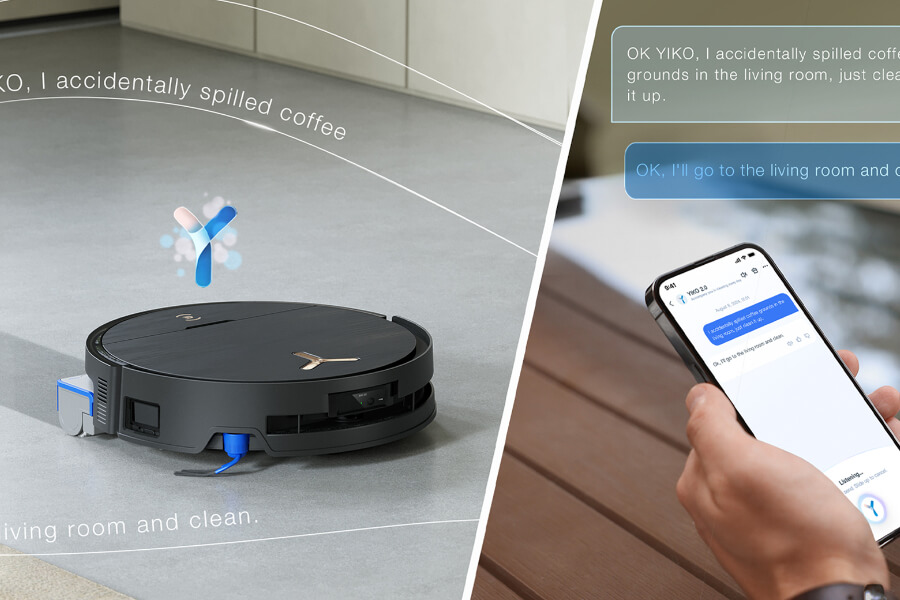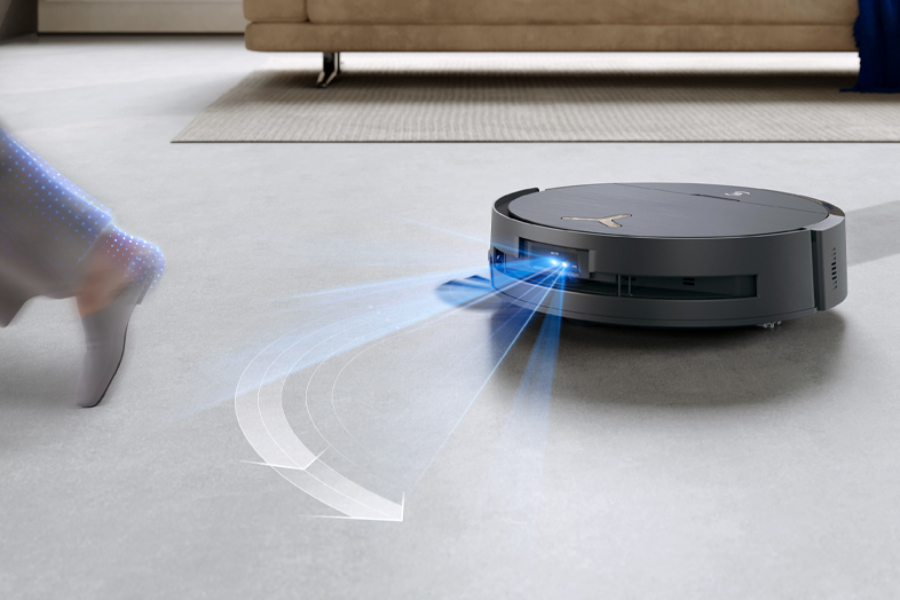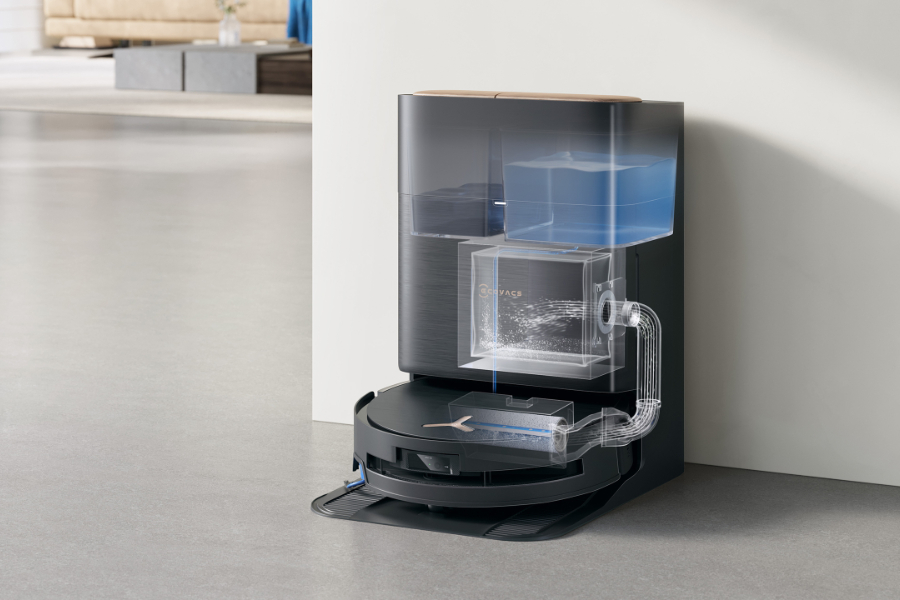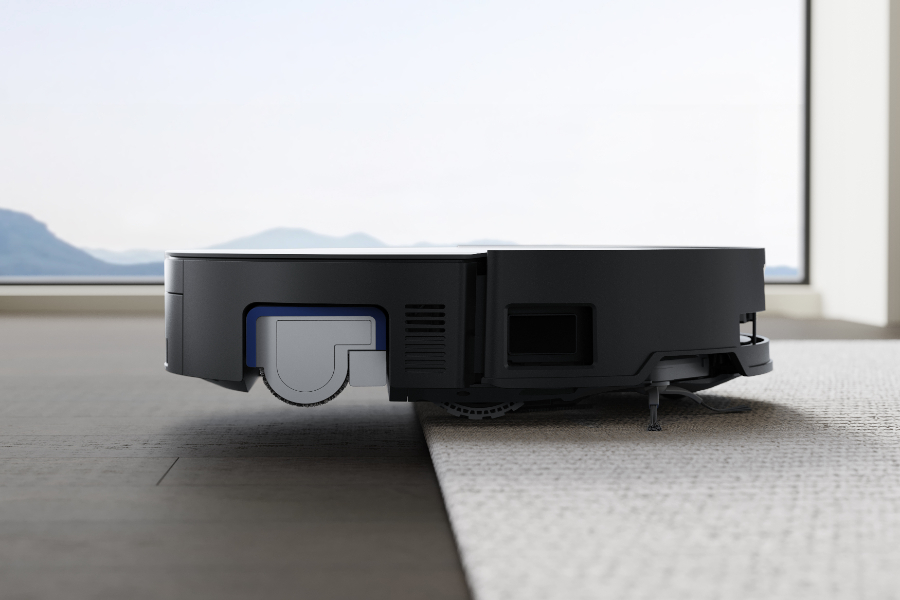What Are The Advantages & Disadvantages of Robot Vacuums
2024-11-22

Imagine a world where the tedious tasks of vacuuming and mopping are no longer part of your to-do list – where pristine floors are just a button push away. This isn't just a dream anymore; ever since robotic vacuums and mops entered the market, they have revolutionized the way people clean. These smart devices not only clean your troubles away, but also save time and effort. However, is investing in a robot vacuum worth it? What are the advantages and disadvantages? Before bringing one home, let’s explore the pros and cons to help you make an informed choice.
What Are The Pros Of Robot Vacuums
Smart vacuums offer various advantages, including saving time, improved cleanliness and hygiene, the ability to clean when you aren’t home, smart home integration, self-charging, virtual boundaries, different cleaning modes, and even mopping functions, making them a versatile and efficient cleaning solution.

Time-saving capabilities
Say goodbye to pushing a vacuum around the house and reclaim your valuable time. Robot vacuums and mops are designed to navigate and clean your place autonomously. They don’t get sick; once programmed, they keep your floors spotless with no intervention required. Models with self-emptying capabilities can work on their own for a period of time, requiring simply occasional check-ups. Some robots even send app alerts when a part needs attention, making it much easier to maintain.
Convenience
For those always on the go, robot mop vacuums are your best partners for home cleaning. Thanks to multifunctional docking stations that charge, empty the dustbin, refill the water tank, and clean the mop heads, these vacuums are empowered to clean when you aren’t home. When you’re at home, set them on quiet mode to prevent disturbing your work or sleep. Furthermore, the mobile app allows you to manage and monitor them remotely from anywhere, while high-tech sensors ensure the robot works efficiently even in the dark.

Integration with Smart Home Systems
Smart vacuums and mops integrate seamlessly into smart home systems for a truly hands-free experience. Through the user-friendly app, you can adjust cleaning settings, schedule sessions, and set no-go zones or virtual barriers. For the elderly or individuals with mobility issues who may find the app challenging to use, voice assistants like Amazon Echo, Google Assistant, and Apple's Siri enable control through simple voice commands. Advanced models even handle multi-turn conversations and convey several instructions in a single sentence for additional convenience.
Virtual Boundaries
Virtual boundaries help define areas where your auto vacuum should or shouldn’t clean. Using the app, you can create no-go zones or set virtual barriers to block the machine from entering specific areas, such as those with dog poops or broken glass. This feature is also perfect for keeping the vacuum out of bedrooms when your child is asleep, or when you’re having an online meeting, while keeping up with the cleaning schedule.
Self-Charging
Robot vacuums with docking stations are designed to charge autonomously. When the battery runs low, the smart device automatically returns to its dock, recharges, and resumes cleaning right where it left off – the entire process is self-sufficient and doesn’t require your attention. To ensure this process is smooth, choose the right spot to store the docking station: place it against a wall near a power outlet, and create a docking zone with enough clearance for easy access. Generally, leaving 5cm on each side and 80cm in front of the station will be sufficient.
Customizable Cleaning Modes
Cleaning the floor isn’t just about vacuuming and mopping; there are many different floor types on the market, each with unique care needs. You may need to adjust settings, such as suction power and water level, to prevent damage. Robotic vacuum cleaners have customizable cleaning modes to suit various needs, including spot cleaning for spills, edge cleaning for baseboards, and whole-floor cleaning. Their advanced sensors and algorithms help identify different floor types and automatically adjust suction levels and mopping intensity. Alternatively, you can personalize the settings to match your preferences.
Intelligent Navigation
Ever wondered how a smart vacuum navigates your home without bumping into furniture? Advances in technology have introduced smart navigation systems to robot vacuums with mapping. Using laser sensors and AI-based systems, these vacuums create a 3D map of the room and plan routes to cover all corners. During the cleaning session, the navigation system will identify obstacles on the path and move around them, therefore minimizing the risk of damages.
Auto-Empty Features
Auto-empty robot vacuums frequently transfer the contents of their dustbins into a larger storage bag in the base station, eliminating the need for manual emptying after each use. This feature is especially beneficial for those with allergies, as it minimizes contact with dust, pet hair, as well as other allergens. Thanks to the auto-empty design, your vacuum can operate on its own for up to 60 days1 without concerns about odors or bacteria.
Mopping Capabilities
In general, vacuuming alone cannot guarantee a perfect, clean floor, as fine dust and stains tends to be best removed through mopping. Luckily, many automatic vacuums now double as mops, handling duo tasks at once to save time and improve efficiency. When running a robot vacuum and mop, keep in mind to adjust water levels according to different floor surfaces; for instance, use a lower water level when cleaning carpets and hardwood floor compared to tiles and laminate floors.
Efficiency
Robot vacuums and mops significantly improve cleaning efficiency by combining powerful vacuuming and mopping in one device. Operating independently, they clean religiously according to preset schedules, so you don’t need to be present during the cleaning session. Models equipped with HEPA filters or other high-efficient filtration systems effectively capture fine dust and allergens to help maintain a healthier living space. Self-emptying models add even more convenience by securely containing dust, reducing the need for manual maintenance.
What are the Cons of Robot Vacuums?

Robotic vacuums have disadvantages, including getting stuck, high initial costs, maintenance needs, limited cleaning performance, inefficiency in certain areas, battery drain, noise, and frequent emptying. However, ECOVACS mitigates these issues with advanced features and continuous innovation through R&D to enhance and refine their products.
Initial cost
The upfront cost of smart vacuums is typically higher than that of traditional canister, upright, stick or handheld vacuums, due to the advanced technology and smart features that power their autonomous cleaning capabilities. Despite the initial expense, the long-term benefits – including the convenience they offer, the physical demand they spare, and the time they save – often make the investment in a robot mop vacuum worthwhile.
ECOVACS' solution: DEEBOT robot vacuum and mops come with sophisticated features like the auto-empty OMNI station and AI-powered navigation for a truly hand-free cleaning solution.
Maintenance requirements
Just like any high-tech gadget, automatic vacuum and mops require a bit of TLC to maintain optimal performance and prolong their lifespan. Examples of common issues include overstuffed dustbins, clogged brushes and filters, and electronic glitches like internet disconnections. Replacing these high-tech parts can also come at a higher cost than those for traditional vacuums.
ECOVACS’ solution: Self-emptying stations reduce the risk of overfilled dustbins, while ZeroTangle Anti-Tangle Technology prevents entanglements on the brushes.
Getting Stuck
Sometimes auto vacuums may get stuck under low-height furniture, stopped by door thresholds, or caught on thick rugs. They can also get tangled in cords, clothes, shoelaces, or pet toys, putting their cleaning session to a sudden stop.
ECOVACS’ solution: DEEBOTs are well-trained to recognize and avoid common obstacles like wires and toys. The AINA navigation model help response swiftly to indoor scenarios, such as navigating around open doors.
Physical Limitation
One common critique of robotic vacuums is that they may not be as efficient as traditional vacuums due to physical limitations. For instance, they cannot climb stairs, so you will need to manually move them if your house has multiple levels. They may also struggle with uneven floors and have difficulty reaching narrow or tight spaces. Plus, these smart devices are limited to cleaning floors and cannot reach cabinets, bay windows or desks, which also tend to collect dust and debris.
ECOVACS' solution: For multi-story homes, DEEBOT robot vacuums can store multiple maps. Opt for a DEEBOT combo with handheld vacuums to clean furniture and tight corners effectively.
Inefficient Cleaning
Another disadvantage of auto vacuums is that they may struggle with heavy debris and often do not deliver the deep clean that traditional vacuums provide. Their suction power may not be as strong, which can be a drawback. For example, if you have thick rugs at home, the suction power of some vacuum robots may not be able to remove the dirt and debris embedded between the carpet fibers.
ECOVACS' solution: DEEBOTs offer up to 20,000Pa suction power2, one of the strongest on the market, making them efficient on carpets. The AI Instant Re-Mop function adjusts water levels and cleaning paths according to the stain sizes.
Battery Drain
Due to their compact design, robot vacuums usually have small rechargeable batteries, which can limit cleaning duration. For larger spaces or extended cleaning sessions, they may require mid-session charging, which leads to disruption to the cleaning schedule. Over time, battery degradation can further reduce runtime.
ECOVACS' solution: DEEBOTs feature extended battery life, capable of cleaning up to 320 minutes3 on a single charge. They also include auto-return charging that allows them to resume cleaning exactly where they left off after recharging.
Extremely Noisy
Vacuuming noises can be annoying, especially when you need to concentrate at work or your kids are sleeping. If you live with dogs and cats, they tend to be sensitive to these noises and may become scared. Loud vacuuming noises are disruptive in quiet environments, particularly when running on high suction modes or hard floors.
ECOVACS' solution: DEEBOT robot vacuums are quiet as they have optimized motor designs and adjustable suction settings for quieter operation. Regular maintenance also minimizes noise caused by worn-out or damaged parts.
Frequent Emptying
Robotic vacuum cleaners with small dustbins require frequent emptying; if you live with pets or a large family, it will likely need to be emptied after each cleaning session. If you don’t empty the dustbin, it can result in unpleasant smells and hygiene issues. That said, frequent emptying can become inconvenient and increase maintenance demands.
ECOVACS' solution: DEEBOTs come with self-emptying docking stations, like OMNI stations, that transfer debris into a larger bin, reducing the frequency of emptying to as little as once every 60 days1.
Robot Vacuum or Robot Mop: What Are The Differences?
While robot vacuums and robot mops share the goal of automated cleaning, their functions cater to different needs. Robot vacuums are designed to pick up dirt, dust, pet hair and debris from various floor surfaces using suction and brushes, while robot mops focus on wet cleaning, mopping away fine dust, stains and spills for a polished finish.
Some premium models offer a hybrid approach, combining vacuuming and mopping functionalities in one to provide a comprehensive solution for home cleaning.
FAQ
What are the complaints about robot vacuums?
Common complaints about robotic vacuum cleaners include their higher price tag, the need for regular maintenance, and their cleaning performance, which is often less thorough compared to traditional vacuums.
What are the pros and cons of robot vacuum with mops?
Robot vacuums with mops offer a convenient, hands-free cleaning solution that can vacuum and mop simultaneously. However, they typically have a higher initial cost, and their cleaning performance may be limited by physical constraints. Before purchasing, consider their advantages and disadvantages to determine if a robot vacuum with a mop is worth your investment.
How do robot vacuums work?
Smart vacuums use advanced sensors and technology to map their environment before cleaning. They rely on suction heads, roller brushes, and mops (if available) to clean effectively. Debris is filtered and stored in the dustbin. Once they return to the docking station, some models auto-empty and clean themselves to prepare for the next task.
How to choose a robot vacuum?
Choose a robot vacuum based on features such as suction power, navigation system, smart features, and self-emptying capabilities. For example, if you have allergies, models equipped with HEPA filters are a better fit.
Should I get a robot vacuum with or without mop?
Deciding between a robot vacuum with or without a mop depends on your needs. A mop is excellent for removing stains and fine dust that can trigger allergies, while a vacuum-only model may suffice for carpets and basic cleaning.
Disclaimer(s):
- 30 to 60 days: This data comes from ECOVACS laboratory, which is based on the statistics of the number of times users disposed of traditional dustbins. The actual performance is subject to change due to frequency and cleaning area. Apply to DEEBOTs that come with 3.2L disposable dust bag.
- 20,000Pa: This data comes from ECOVACS laboratory. The suction power of DEEBOT T30C can reach 20,000Pa.
- 320 minutes: The DEEBOT N30 PRO OMNI features an upgraded 5,200mAh battery, giving it a maximum runtime of 320 minutes on a single charge while vacuuming on quite mode.
Related Products


.jpg?x-oss-process=image/format,webp)






